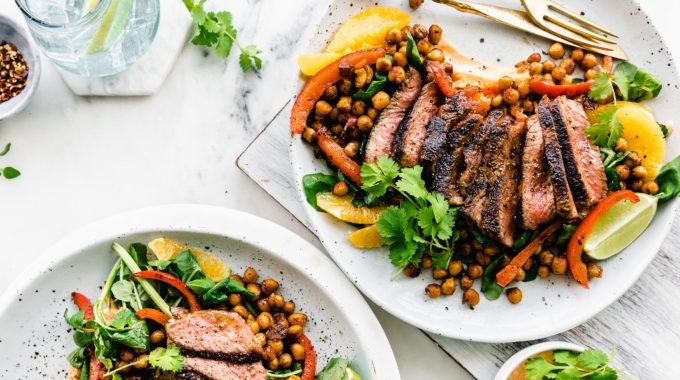Tasty Australian beef winter warmers
There’s so much conflicting advice out there about what we should and shouldn’t be eating to stay healthy. While not everyone chooses to eat meat, for those who do, it can be confusing to know whether red meat like beef is good for us or the root of all dietary evil. To clear things up once and for all, we asked Veronique Droulez, Senior Nutrition Manager at Meat & Livestock Australia, to give us the lowdown on red meat and health. And to help you put her words into action, we also share some tasty recipes featuring Australian beef.
According to Droulez, the Australian Dietary Guidelines recommend you eat 455g of cooked red meat each week. That’s the equivalent of 650g per person of raw meat after trimming.
“This equates to three to four red meat meals a week with meal portion sizes ranging from 100g to 200g, raw weight,” Droulez explains. “This is important, as red meat is the best way to get enough iron and zinc in your diet, and both are recommended for good health.”
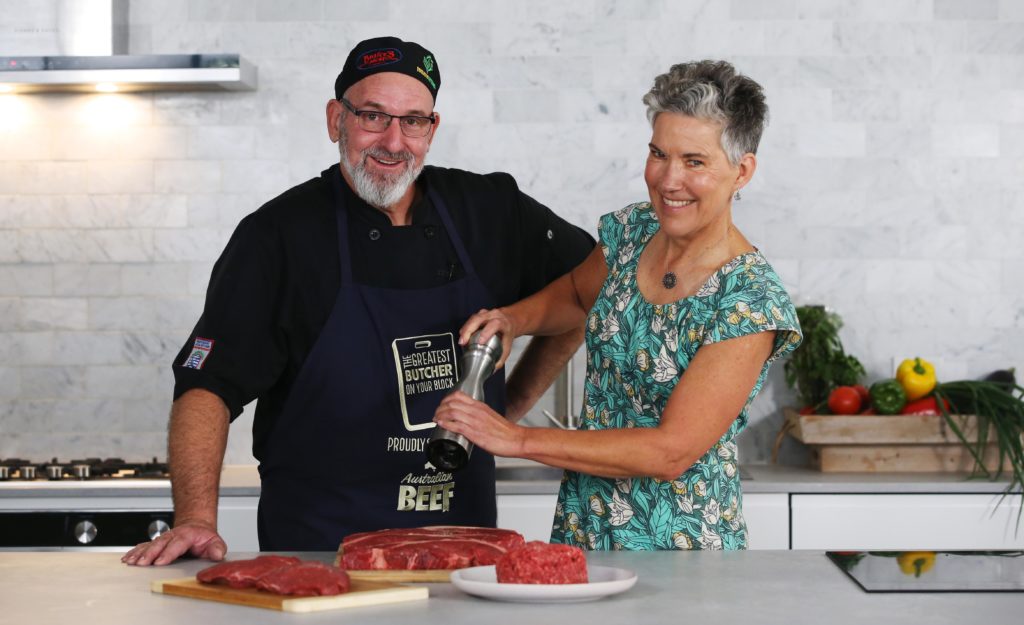
Beef up your immune system
Iron is an essential component of haemoglobin, which is needed to carry oxygen around your body through your blood. It’s also important for producing energy, and for optimal immune function. Zinc is also essential for supporting a healthy immune system, as well as being needed by almost 100 enzymes to carry out vital chemical reactions in your body. Zinc is also a key player in the creation of DNA, the growth of cells, the building of proteins and healing damaged tissue. Along with iron and zinc, red meat is packed with 12 essential nutrients like omega-3s, B vitamins, magnesium, selenium and phosphorous.
“We need these essential nutrients for energy and healthy muscles, and for our brain and immune system to function,” Droulez says. “All lean cuts of beef, including lean mince, are nutritious choices when trimmed. The levels of fat and saturated fat are also relatively low compared to other popular protein foods like chicken and fish.”
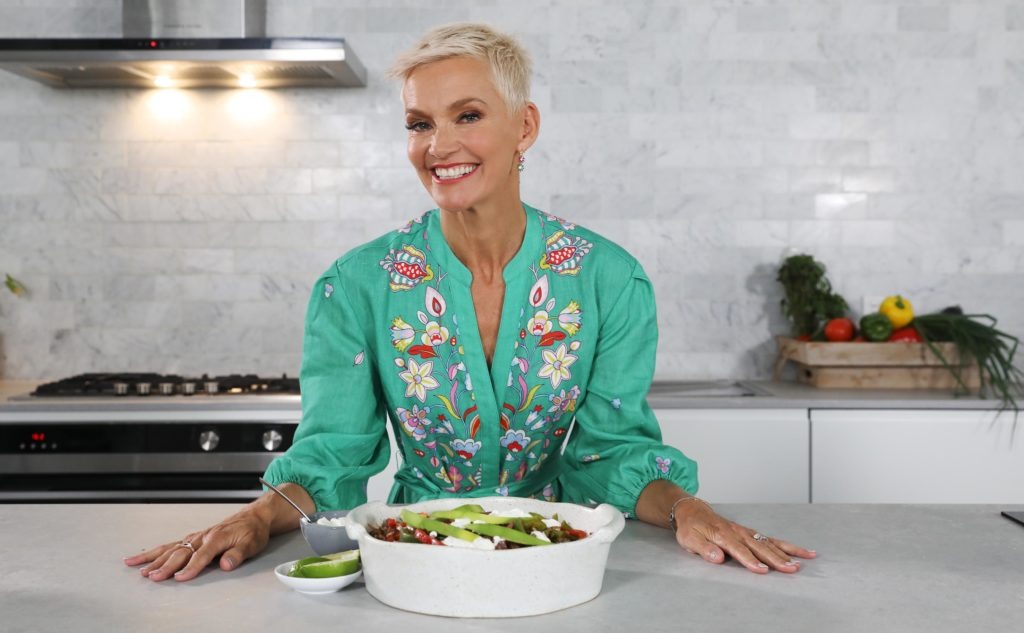
Strike a balance
Red meat is usually paired with vegies in recipes, which means cooking up a dish that features red meat like Australian beef is an easy way to boost your veg intake.
“The dietary fibre in vegetables and whole grains is important for gut health,” Droulez says. “So, along with red meat’s essential nutrients, this makes a great healthy, balanced meal.”
Journalist, author and “crap housewife” Jessica Rowe has been working with Australian Beef for the past three years as part of their Greatest Butcher campaign. She says she’s learned a lot about how to cook beef, but also how red meat can fit into a healthy diet.
“The guidelines say you should be eating three to four serves of red meat a week, with vegies,” she says. “It’s so good for you! I have a history of bowel cancer in my family, but I feel confident eating red meat as part of a healthy diet. It’s all about balance.”
To top up your tank as you prepare for winter, try the below hearty recipes from Australian Beef. Both contain plenty of veg, along with the essential nutrients that red meat provides.
Want to get more Aussie beef into your diet? For more recipe ideas, head to australianbeef.com.au. You can also try this recipe for beer and beef brisket pie, these recipes for meatball subs and Philly cheesesteaks and this recipe for healthy beef rissoles.
To find out about The Greatest Butcher campaign and how you could win the ultimate kitchen kit just by buying Australian beef, head to greatestbutcher.com.au
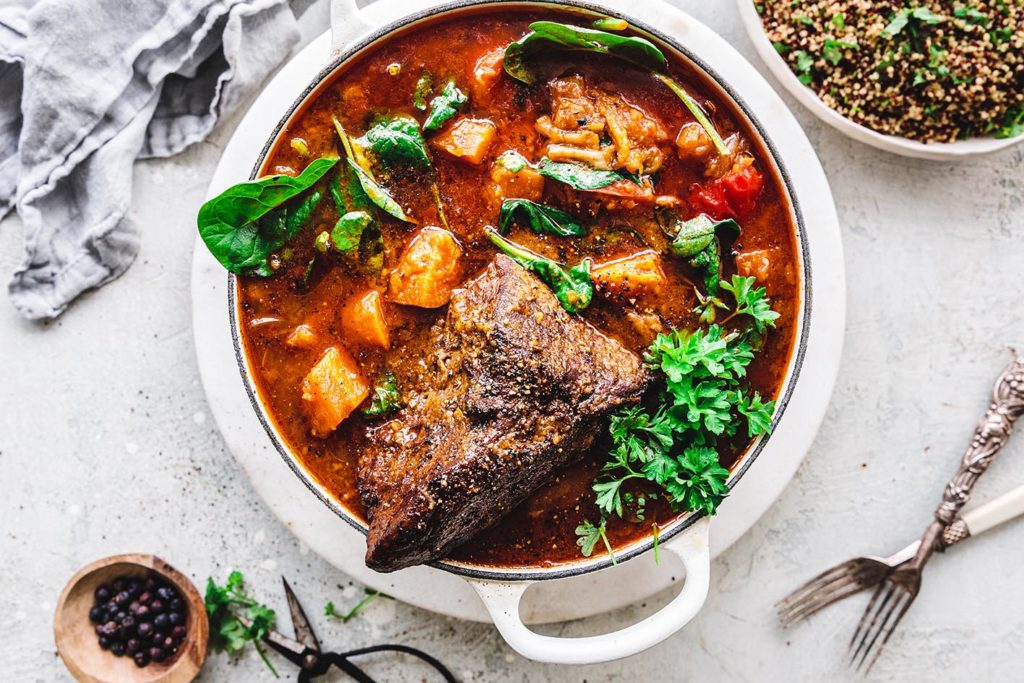
Moroccan topside roast
Serves 6
You’ll need:
3 tsp Moroccan spice blend
1 tsp salt
2 tbsp olive oil
1kg top roast
500g sweet potato, cut into 2.5cm cubes
6 carrots, roughly chopped
2 large onions, cut into wedges
1 cup beef stock
2 tbsp tomato paste
½ tsp Dijon mustard
2 red capsicums, deseeded and cut into thin strips
3 cups baby spinach
To serve:
Fresh coriander
1 tbsp finely chopped flat-leaf parsley leaves
1 tsp lemon zest
1½ cups dry quinoa, cooked to instructions
Method:
1. In a small bowl, combine the spice blend and salt.
2. Drizzle half the olive oil over the roast and sprinkle over spice mix, rubbing well to coat.
3. Add remaining oil to a medium-hot pan and seal meat on all sides (about 6 to 8 minutes).
4. Meanwhile, in a small bowl, combine the stock, tomato paste and mustard.
5. In a large crock pot, add carrots and potato, then add the meat and top with the onions.
6. Pour over the stock mix, add the lid and simmer on low for 1.5 to 2 hours until the meat is cooked through and tender.
7. Add the capsicum and cook for a further 20 minutes.
8. Remove the meat from the oven, set aside and slice.
9. Skim fat from the pot. Add spinach and stir well, allowing residual heat to wilt the leaves.
10. Using a slotted spoon, transfer the vegetables to plates, add the beef, then drizzle with remaining liquid from the pot.
11. Top with fresh herbs and lemon zest before serving, and serve with quinoa
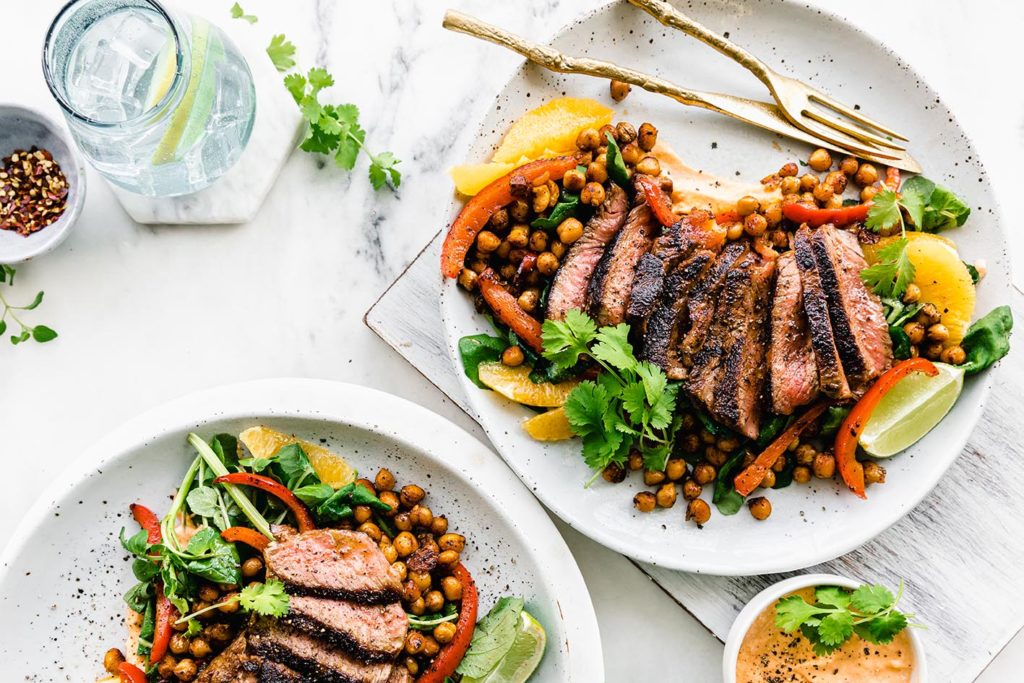
Smoky scotch fillet
Serves 4
You’ll need:
600g scotch fillet
3 tbsp olive oil
Sea salt and black pepper
1 tsp smoked paprika
4 red capsicums
2 tbsp plain Greek yoghurt
400g can chickpeas, drained
1 large bunch watercress
1 large orange, segmented.
Fresh herbs (to garnish)
1 fresh lime
Method:
1. Heat a griddle pan on a high heat. Set the steak on a wooden chopping board and drizzle over 2 tablespoons of olive oil.
2. Season both sides with salt, pepper and paprika.
3. Prepare the sauce by roughly chopping 2 capsicums into cubes and placing in a saucepan of boiling water for 8 minutes until tender.
4. Remove capsicum and transfer to a blender, add 2 tablespoons of Greek yoghurt. Process until smooth and set aside.
5. Add steak to hot pan, cooking for 3 minutes on each side or until cooked to your liking.
6. Remove steak from the pan and let it rest for 5 minutes while you prep the salad.
7. Slice the remaining capsicum into strips and add that, along with the chickpeas and the remaining olive oil, back into the same hot pan.
8. Cook for 5-8 minutes, stirring occasionally.
9. Plate watercress, chickpeas, orange segments and capsicum. Slice steak and add on top.
10. Serve with capsicum purée, season as desired and garnish with fresh herbs. Squeeze over fresh lime juice and serve immediately.


